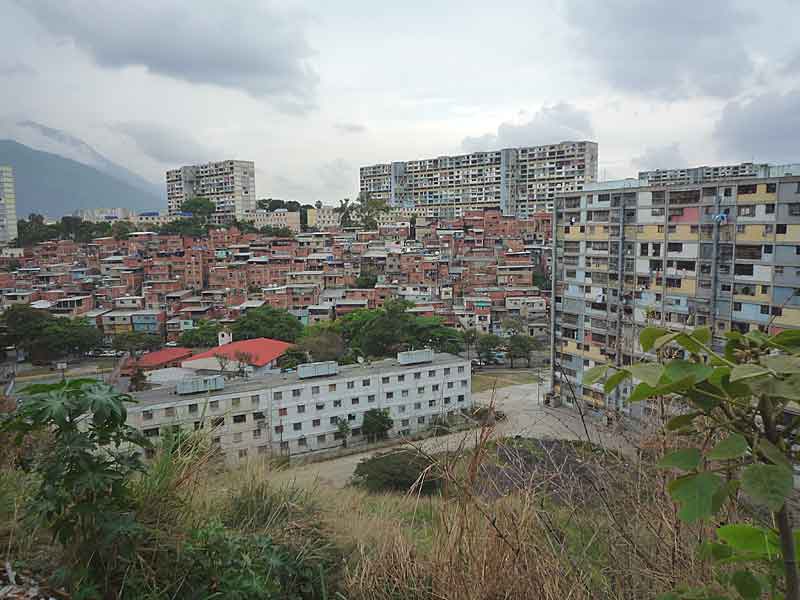|
|
23 de Enero (Ventitres de Enero / 2 de Dicembre), Venezuela, South America |
|
|
|
|
|
|

source: Ewout Dorman
|
The president of Venezuela then, Marcos Pérez Jiménez, commissioned Villanueva, the most famous Venezuelan architect of his period, to design the voluminous modern housing project of 23 de Enero (23rd of January). The earlier ranchos near the government zone of Caracas were replaced by approximately 50 big blocks of 15 floors and 50 smaller blocks of four. It was built to house Caracas' working population. Pérez Jiménez, having come to power on the 2nd of December 1952, named the neighbourhood 2 de Diciembre. The dictator was overthrown on the 23rd of January 1958; followingly campesinos and poor people started to squat 4000 of the 9000 apartments in the unfinished superblocks, and barrios grew on the free spaces between the buildings. Since then named 23 de Enero, the district has been a highly politicized and partly organized urban site hosting many social movements and organisations. Today middle class people are living in the now colorful houses, whereas the spaces in between them are slums. Completely outside the scope of central planning, the shanty developments have considerably adapted 23 de Enero's design: sports fields, roads, and pedestrian routes remain as open boundary spaces, while the infrastructures of the super blocks (water and electricity) have been used as plug-in facilities for the expansion of new neighbourhoods. But unlike Villanueva's modern buildings and plan, the barrio areas have no representational architecture to guide one around; one has to know the areas to be able to read them. The neighbourhood has been analyzed by CCS/Urban Think Tank as a signal site for the tension between the social ambitions of Latin American Modernist architecture and the demands of inhabitants.
more images: http://www.el23.net/historia23/el23historia.htm
population today: 76,000/500,000 (incl. barrios)
source: http://www.raulzelik.net/textarchiv/english/case-eng.htm, http://www.lot.at/ccs/mega_en.html, http://www.uks.no/GARDAR/div_craig_buckley.html |
|
2008 - 2024 disclaimer
|

